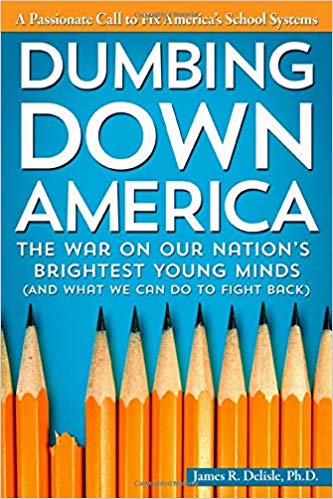A Brief Book Summary from Books At a Glance
By Benjamin J. Montoya
About the Author
James R. Delisle, PhD, is an internationally recognized educator of gifted children and the author of 21 books about understanding gifted kids as an educator and parent.
Introduction
There is no questioning that we have gifted children in our country, but what should we do with them? Unfortunately, there is no straightforward answer. But, James R. Delisle helps us consider this topic further with insight from someone who has spent so much time with gifted children, has insight into current programs that either help or hinder gifted children, and has keen advice for going forward.
Table of Contents
Chapter 1 In the Beginning
Chapter 2 The Upsides
Chapter 3 The Battle of Equity Over Excellence
Chapter 4 Is Giftedness Something You Do or Someone You Are?
Chapter 5 Instructional Panaceas That Aren’t
Chapter 6 Legislative Absurdity . . . and the Organizations That Try to Rein It In
Chapter 7 What Next?
Chapter 8 The Big Picture: Fitting Gifted Child Education into the Broader Educational Landscape
Chapter 1: In the Beginning
Most everyone has heard of gifted children. But what ought schools to do with them? Although there are plenty of gifted children in our country, there is an issue of schools handling them differently. There is no questioning the need for offering something for gifted children. But some schools do not have much in place, so they are forced to have gifted students wait until their peers catch up before they can move on in learning.
Plus, there is a widespread problem of schools dumbing students down. For example, one teacher was faced with the end of the school year with several chapters of a textbook to cover. Instead of having the students work extra hard to learn the content, he had them raise their right hand, put it on top of one of the chapters, and then said, “Now we have covered it,” quite literally. This is an alarming dumbing down approach that is likely not an isolated issue.
This approach creates problems for gifted children. These problems include:
- Problems of play and friendship. Gifted children often want to play in more sophisticated way that their peers cannot handle.
- Problems associated with a lackluster school curriculum. These students literally waste a ton of time school pretending to learn while they could be learning and doing much more.
- Problems in becoming negative toward authority figures. Their insights are often ahead of their years, and some people do not like that.
- Problems of using their intellect to take advantage of others. This skill may make them appear to be loners which all gets back to the initial concern of play and friendship.
So, what can be done? Although there are plenty of suggestions, there are lots of upsides and downsides to what has been offered in gifted children programs.
Chapter 2: The Upsides
Because so many people recognize the importance of providing options for gifted children, there are all kinds of options for children to consider. This chapter covers several of them to provide just that. Some of the more common approaches involve accelerated programs at the school level. The upside of these programs is that they integrate with the day of the students. The downside is that many of these programs are limited to the younger years.
That does not mean that there are no options for secondary/high school. One of the more recent additions to the high school level is the option of Advanced Placement (AP) courses, many of which can be dual-enrolled for college credit based on the end-of-year examination. These kinds of courses can provide the kind of challenge that gifted students need.
[To continue reading this summary, please see below....]The remainder of this article is premium content. Become a member to continue reading.
Already have an account? Sign In
Buy the books

DUMBING DOWN AMERICA: THE WAR ON OUR NATION'S BRIGHTEST YOUNG MINDS (AND WHAT WE CAN DO TO FIGHT BACK), by James Delisle